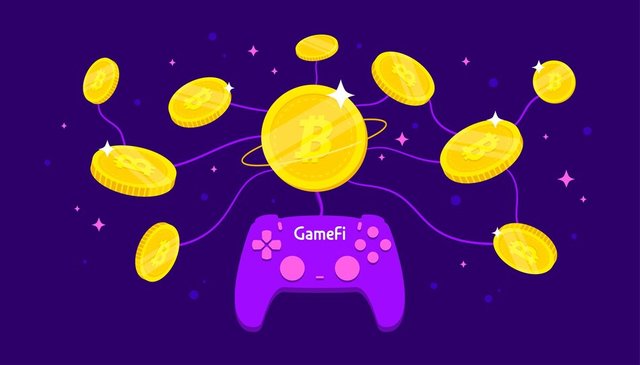
The crypto gaming sector has the potential to onboard the next wave of users into crypto, thanks to the ownership of in-game assets, the ability to earn real income, and cross-game interoperability. Crypto gaming has quietly continued to build and mature throughout the bear market. In this ultimate guide to crypto gaming, we will explore the different types of games and assets, including Web 2.5 games, Web3 games, and on-chain games, console tokens, NFTs, and in-game items.
Types of Games:
Web 2.5 Games:
Web 2.5 games aim to re-create a traditional gaming experience and complement it with crypto elements, such as ownership of in-game items via NFTs. Players can typically access these games through both a traditional email/password login or by connecting their Web3 wallet. Examples of web 2.5 games are Deadrop, Illuvium, and The Fabled.
Web3 Games:
Web3 games are intended for players that are already active in and familiar with the crypto world and require intimate interaction with a blockchain to participate fully. These games often have crypto at the core of the game loop and experience, where users can earn money playing the game. Play-To-Earn (P2E) models have been criticized for their lack of sustainability, leading to more sustainable models such as Risk-To-Earn (R2E). Examples of Web3 games are Axie Infinity, Worldwide Webb, Pixels, and The Beacon.
On-Chain Games:
On-chain games go a step beyond Web3 titles and appeal to the crypto power user. These titles are novel in that the game logic lives entirely on-chain via smart contracts. They possess the properties of any other smart contracts such as composability and immutability. Examples of on-chain games are Dark Forest, Lattice’s OPCraft, and StarkNet’s Influence and Realms.
Types of Gaming Assets:
Console Tokens:
Console tokens are tokens like traditional gaming consoles, representing a specific ecosystem or community. They are often used as governance tokens, enabling holders to vote on protocol changes or updates. Examples of console tokens are MAGIC and IMX.
NFTs:
NFTs or Non-Fungible Tokens are unique digital assets that represent ownership of a specific in-game item. They enable players to own and trade rare or valuable items in-game. Examples of NFTs are Axies, Illuvials, and Voxies.
In-Game Items:
In-game items are digital assets that players can use to improve their gaming experience or progress. They can range from weapons, armor, and other equipment to consumables like potions or food. Players can often buy, sell, and trade in-game items for real money or other digital assets.
Why create an NFT marketplace for trading game assets?
Creating an NFT marketplace for trading game assets offers a number of benefits for both game developers and players.
Firstly, NFTs provide a secure and transparent way to trade in-game items, as each item is unique and has a verifiable ownership history stored on the blockchain. This eliminates the risk of fraud and scams that can be associated with traditional centralized marketplaces.
Additionally, NFT marketplaces allow game developers to create new revenue streams by taking a cut of each transaction on the marketplace. This incentivizes developers to create more unique and valuable in-game items, which in turn can lead to increased player engagement and retention.
For players, an NFT marketplace provides a way to monetize their in-game assets, which they may have spent a significant amount of time and resources acquiring. This can help to create a more sustainable gaming ecosystem, where players are able to earn real value for their time and effort spent in-game.
Furthermore, NFTs can be traded across different games and platforms, creating a larger and more interconnected gaming ecosystem. This can lead to more opportunities for cross-game collaborations and unique gameplay experiences for players.
In summary, creating an NFT marketplace for trading game assets provides a secure and transparent way to trade in-game items, creates new revenue streams for developers, allows players to monetize their in-game assets, and creates a larger and more interconnected gaming ecosystem.
Conclusion:
The crypto gaming sector has quietly continued to build and mature throughout the bear market, and the potential is tantalizing. There are various types of games and assets in the crypto gaming space, including Web 2.5 games, Web3 games, and on-chain games, console tokens, NFTs, and in-game items. With the ownership of in-game assets, the ability to earn real income, and cross-game interoperability, the crypto gaming sector has the potential to onboard the next wave of users into crypto.